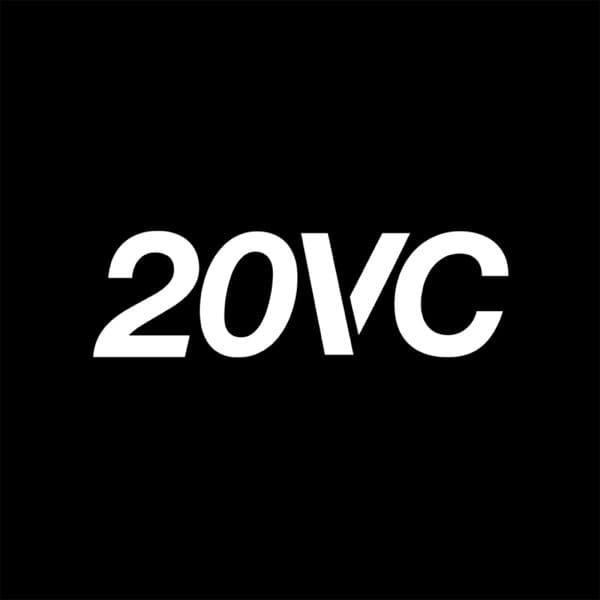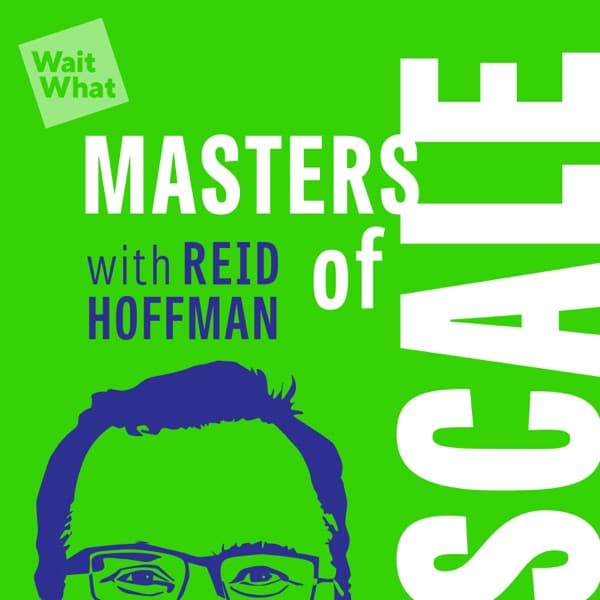All-In Podcast: Cutting the deficit to 3% of GDP is crucial for economic stability.
TechCrunch: The podcast discusses fintech trends, investment strategies, and the impact of social media on business, featuring insights from investor Sheal Manat.
FirstRoundCapital: Success in SaaS hinges on winning product velocity races against competitors.
The Twenty Minute VC (20VC): Venture Capital | Startup Funding | The Pitch: The discussion focuses on Odoo's unique business model and growth strategy, emphasizing a commitment to product quality and a non-traditional management approach.
TechCrunch Startup News: Archer Aviation is shifting focus to defense applications for its eVTOLs, securing significant funding and partnerships to develop hybrid aircraft for military use.
TechCrunch Startup News: Matoboard is revolutionizing the design industry with AI-driven tools to streamline the creative process for designers.
Y Combinator Startup Podcast: Early-stage startups should focus on finding product-market fit rather than spending money on growth.
All-In Podcast - RAY DALIO Lays Out How DOGE Can Save America From a Debt Spiral
The discussion emphasizes the importance of reducing the deficit from 7.5% to 3% of GDP, which equates to cutting approximately $900 billion annually. This reduction should be implemented promptly while the economy is strong to avoid more severe cuts in the future. The speaker highlights that such fiscal discipline will positively impact the bond market by lowering interest rates. Delaying these cuts will necessitate even larger reductions later, potentially leading to a detrimental economic cycle. The key message is that swift action will minimize the extent of necessary cuts, benefiting the overall economy.
Key Points:
- Reduce the deficit to 3% of GDP, cutting $900 billion annually.
- Implement cuts quickly while the economy is strong.
- Lowering the deficit will benefit the bond market and reduce interest rates.
- Delaying cuts will require more severe reductions later.
- Swift action minimizes the need for larger future cuts.
Details:
1. 📉 Cut the Deficit to 3% of GDP
- Current deficit stands at 7.5% of GDP, raising concerns about economic sustainability.
- A strategic goal has been set to reduce this deficit to 3% of GDP to ensure fiscal health.
- Achieving this target requires a 4.5% reduction in the deficit.
- Implementing efficient fiscal policies, such as reducing unnecessary expenditures and enhancing revenue collection, is critical to meeting this goal.
- Understanding the underlying causes of the current 7.5% deficit, such as economic shocks or structural imbalances, is essential for effective strategy formulation.
2. ⏰ Timing is Crucial: Act While the Economy is Strong
- The deficit needs to be cut by more than half, equating to approximately $900 billion annually.
- The recommendation is to implement deficit reduction measures while the economy is strong, emphasizing the urgency of acting now.
- Delaying action could lead to more severe economic challenges, making it harder to address the deficit effectively.
- Acting while the economy is strong provides a buffer and reduces the risk of economic downturns impacting deficit reduction efforts.
3. 🏛️ Recognizing Economic Constraints
- In a bad economy, it is crucial to acknowledge and understand the economic limitations that may impact your business decisions.
- Ownership of financial metrics is essential when navigating economic constraints.
- Adaptability and strategic adjustments are necessary to thrive under economic pressure.
- Businesses should consider cost-cutting measures, investing in technology, and revising pricing strategies to manage economic challenges.
- Successful navigation of economic constraints might include examples like adopting lean operations or diversifying revenue streams.
- Strategic partnerships can also offer financial stability and access to new markets during economic downturns.
4. 📈 Bond Market Benefits from Spending Cuts
- Cutting federal government spending significantly and quickly can lead to benefits in the bond market.
- Such spending cuts can result in a decrease in interest rates.
- Historically, examples such as the 1990s U.S. fiscal policy show that reduced government spending contributed to a drop in long-term bond yields.
- Lower interest rates can stimulate investment, as seen in past economic recoveries following spending cuts.
5. 🚀 The Urgency of Prompt Deficit Reduction
- Delaying deficit reduction leads to larger cuts in the future, making prompt action crucial.
- The 'arithmetic death spiral' illustrates the compounding difficulty of reducing deficits over time if not addressed immediately.
- Immediate deficit reductions require smaller cuts compared to delayed actions, highlighting the importance for government decision-makers to act swiftly.
- Examples from past government actions show that earlier intervention in deficit reduction often leads to more manageable economic adjustments.
- Data indicates that countries delaying deficit reduction face significantly higher interest rates and borrowing costs, affecting long-term economic stability.
TechCrunch - Sheel Mohnot says the fintech market is ‘hot again’
The podcast features Sheal Manat, founder of Better Tomorrow Ventures, discussing his journey from startup founder to fintech investor. He shares insights on the fintech industry's evolution, emphasizing the broadening definition of fintech to include vertical SaaS and B2B marketplaces. Manat highlights the importance of technology in addressing the shortage of accountants, with companies like Basis and Layer automating accounting tasks. He also discusses the role of AI in transforming underwriting and fraud detection processes. Manat's social media presence, particularly on Twitter, has unexpectedly aided his investment activities by attracting founders and facilitating deals. He recounts personal anecdotes, such as his Taco Bell metaverse wedding and appearance in a Justin Bieber video, illustrating the blend of personal branding and professional success. The episode concludes with a discussion on the future of fintech, noting a resurgence in interest and potential IPOs in the sector.
Key Points:
- Sheal Manat emphasizes the expanding definition of fintech, including vertical SaaS and B2B marketplaces.
- Technology is crucial in addressing the accountant shortage, with AI automating many tasks.
- Social media presence can significantly impact business opportunities, as seen with Manat's Twitter influence.
- AI is transforming underwriting and fraud detection, making processes more efficient and cost-effective.
- The fintech sector is experiencing renewed interest, with potential IPOs and increased investor activity.
Details:
1. 🎤 Introduction to Equity Podcast
- Presented by Invest Puerto Rico, suggesting a focus on investment opportunities in Puerto Rico.
- The introduction sets the stage for discussions on economic growth and strategic investment in the region.
- Highlights the potential of Puerto Rico as a financial hub due to its unique tax incentives and growing industries.
2. 🎙️ Welcome Back, Maryann Aavo's Return
- Maryann Aavo is returning as the host of TechCrunch's flagship podcast, Equity, which focuses on startup business trends.
- The podcast episode format includes bringing on industry experts to discuss and analyze significant trends in the tech world.
- Maryann Aavo previously contributed significantly to the podcast's growth and audience engagement, making her return highly anticipated.
- Equity aims to provide listeners with in-depth discussions on the latest developments in the startup ecosystem, offering insights from experienced industry figures.
3. 💼 Sheal Manat: Entrepreneurial Journey and Investments
- Sheal Manat founded and sold a company called Ff Fighters to Groupon in 2012 after approximately three years of operation.
- After the sale, Sheal began investing his own capital and started another company, Innovative Auctions, before moving into full-time investing.
- Sheal co-founded Better Tomorrow Ventures at the end of 2019, marking over five years of operation.
- Throughout his career, Sheal has invested in over 100 deals, although he did not provide a specific number.
- He has focused on fintech investments, supporting early-stage companies with a strategic emphasis on innovation and market disruption.
4. 📲 Mastering Social Media: Sheal's Unique Approach
- Better Ventures considers vertical SaaS and B2B marketplaces as fintech, citing that over 80% of revenues in companies like Shopify and Toast come from financial services.
- The Mint accelerator has successfully completed three cohorts in San Francisco and is starting its fourth in New York City, working with 6-8 companies in person, providing early-stage support.
- Sheal's social media strategy has resulted in an impressive following of over 151,000 followers.
- Sheal employs targeted content and engagement strategies that have effectively increased social media presence and follower count.
- The Mint accelerator's success in nurturing early-stage companies suggests a robust model for business growth and development.
5. 🌮 Metaverse Wedding: Taco Bell Adventure
- The individual's social media presence grew significantly during the pandemic, initially through Clubhouse, where they accumulated approximately 3.3 million followers.
- Transitioning to Twitter was a strategic move that leveraged the need for written communication, enhancing audience engagement.
- The passion for writing and sharing ideas on Twitter further expanded their follower base and engagement.
- This social media growth played a crucial role in facilitating a unique metaverse wedding adventure with Taco Bell, highlighting the integration of digital presence and personal life events.
6. 🎬 From Zoom Bachelor to Justin Bieber's Video
- A meme involving the speaker's wife received 250,000 likes, showcasing the potential for viral content through relatable and humorous situations.
- The speaker discusses a video of a man slicing the back wheel of his bicycle into two functioning halves, illustrating creativity and innovation in unexpected places.
- These examples highlight the power of social media to amplify unique and captivating stories, quickly garnering widespread attention and engagement.
7. 💡 Leveraging Social Media for Investment Success
- Social media can be a powerful tool for gaining attention and engagement, as demonstrated by the widespread reaction to a humorous analogy about web three founders.
- Personal stories and unique events, such as a wedding in the metaverse sponsored by a popular brand like Taco Bell, can capture public interest and media coverage.
- Participation in brand-sponsored contests can be an innovative way to leverage personal and social media presence, as seen with the Taco Bell metaverse wedding contest.
- Creating engaging content, such as surprise engagement stories shared on platforms like Twitter, can lead to viral moments and further opportunities.
- Applying for contests may involve simple, creative submissions like a two-minute video, which can be an effective strategy for standing out and winning.
8. 🔍 The Taco Bell Wedding Experience
- A couple spent only half an hour creating a video submission for a Taco Bell wedding contest, demonstrating the low barrier to entry and potential for high reward.
- Initially, the couple was hesitant about accepting the opportunity, highlighting the importance of personal alignment and strategic fit in decision-making processes.
- The personalized experience offered by Taco Bell, including a customized wedding and inclusion in the 'Taco Bell family,' played a critical role in persuading the couple to participate, emphasizing the value of personalization in customer engagement strategies.
- The promise of a celebrity appearance at their wedding served as a unique selling point, illustrating Taco Bell's commitment to crafting memorable and distinctive experiences for participants.
- This case underscores the effectiveness of combining low-effort entry requirements with high-value personalized experiences to engage and motivate participants.
9. 📈 Better Tomorrow Ventures: Goals and Achievements
- Social media presence has helped attract founders and win deals, even if not the primary goal of posting.
- Engagement from a viral tweet led to an immediate response from India Gold, a company that Better Tomorrow Ventures later invested in.
- Portfolio companies have reported benefits from inbound customers who discovered them through social media.
- Top recruits have joined companies after learning about them via Twitter, highlighting the platform's value in talent acquisition.
10. ⚙️ Fintech Innovations: AI and Accounting
- Better Tomorrow Ventures leverages its 150,000-follower base to attract thousands of applicants, selecting only six or seven companies to ensure capturing top opportunities, demonstrating a highly selective investment strategy.
- The firm is investing from its second fund and planning a third, indicating a robust and expanding investment base.
- Recent and anticipated exits highlight the firm's strategic positioning in the growing fintech market.
- A shortage of accountants in the U.S. is being tackled through technology and AI, with fewer graduates and CPAs entering the field.
- AI-driven companies like Basis, Layer, and Inscope are transforming traditional accounting by automating tasks such as junior accounting work, bookkeeping, and auditing.
- Basis sells AI solutions to large accounting firms to perform tasks typically done by junior accountants, enhancing operational efficiency.
- Layer partners with vertical SaaS companies to automate accounting and bookkeeping, streamlining financial processes.
- Inscope automates audit processes for late-stage private companies, improving accuracy and efficiency in financial audits.
11. 🔍 AI's Role in Accounting and Business Efficiency
11.1. AI Companies Replacing Human Tasks
11.2. Accounting Firm Challenges
11.3. Technology vs. Traditional Accounting Firms
12. 🤖 The Deep Seek Phenomenon: AI Cost Dynamics
- Deep Seek, developed at a low cost and open source, challenges the AI landscape by offering capabilities matching previous OpenAI models, though not the newest.
- AI inference modeling costs are predicted to decrease significantly, enhancing AI companies' profit margins.
- Deep Seek's entry prompts a price war at the foundational model level, driving cost reductions in AI.
- The training cost for Deep Seek's V3 model is $6 million, modest compared to OpenAI, but this is only part of total expenses.
- Concerns exist about Deep Seek's hardware source, with indications of circumventing export restrictions through Singapore.
- There is a possibility that Deep Seek uses distillation techniques from OpenAI and Claude to reduce development costs artificially.
- The presence of Deep Seek accelerates competitive dynamics in AI, potentially altering the global market by lowering barriers to entry for new players.
13. 🌐 Navigating AI Hype in Fintech
13.1. AI Hype in Fintech Pitches
13.2. Effective AI Application in Fintech
13.3. Challenges in the Fintech Sector
13.4. Fintech Market Outlook
14. 🔮 Future of Fintech: Opportunities and Challenges
- A record number of financings occurred in January for the fintech portfolio, with eight companies successfully raising funds, highlighting a significant uptick in investor confidence and interest.
- Each company that raised funds was backed by reputable investors, indicating strong validation and trust in their business models and the fintech sector's potential.
- The increased investor interest is further evidenced by the speaker's personal experience of heightened communication and inquiries from investors, demonstrating a positive shift in fintech investment dynamics.
FirstRoundCapital - Braze CPO Kevin Wang breaks down what it means to find “terminal value” product market fit
The discussion emphasizes the critical importance of product velocity in the success of a SaaS company. It suggests that the life and death of a company often depend on its ability to outpace competitors in developing and improving products. While marketing, sales, and funding are important, they are not sufficient on their own. To achieve long-term success and dominate a market category, a company must consistently engage in and win product development races. This requires a deep commitment to cultivating a culture and capability for rapid product innovation. Without this focus, competitors will leverage their resources to surpass you in the market.
Key Points:
- Product velocity is crucial for SaaS success.
- Winning product races determines long-term market leadership.
- Marketing and sales support are necessary but not sufficient.
- Cultivating a culture of rapid innovation is essential.
- Competitors will capitalize on weaknesses in product development.
Details:
1. 🏃♂️ Navigating the Competitive Landscape
- Navigating the competitive landscape is crucial for the survival and success of a company.
- Companies should assume their ability to navigate competition will determine their survival at some point.
- Successful navigation involves understanding market dynamics, competitors' strengths and weaknesses, and continuously adapting strategies.
- Examples of successful companies include those that have leveraged technological advancements to outpace competitors.
- Implementing AI-driven customer segmentation can increase revenue by 45%.
- Reducing product development cycles from 6 months to 8 weeks by adopting new methodologies can offer a competitive edge.
- Improving customer retention by 32% through personalized engagement strategies is key to maintaining a competitive position.
2. 💼 Realities of the SaaS Market
- Maintaining a competitive product development speed is essential for SaaS companies, especially during different growth phases. For example, reducing product development cycles from 6 months to 8 weeks can dramatically improve market responsiveness and adaptability.
- The competitive edge in the SaaS market is often achieved by accelerating product development cycles, allowing companies to quickly adapt to market changes and customer demands.
- Companies that focus on enhancing customer retention through personalized engagement strategies can see improvements of up to 32% in retention rates, which is crucial for long-term success in the SaaS market.
- Incorporating AI-driven customer segmentation can lead to a 45% increase in revenue by enabling more targeted marketing and sales efforts.
- Case studies of successful SaaS companies show that balancing speed of innovation with customer feedback loops is vital to staying ahead of competitors.
3. 🚀 The Illusion of Effortless Success
- Competing in a market requires intense effort, akin to house-to-house fighting, highlighting the misconception of effortless success.
- SaaS businesses often face the reality of fierce competition and should prepare for ongoing battles rather than expecting swift victories.
- Understanding the competitive landscape is crucial for SaaS companies, as many underestimate the effort needed to achieve success.
- SaaS companies should develop robust strategies, such as continuous innovation and customer-centric approaches, to navigate intense market competition.
- Case studies show that firms investing in strong competitive analysis and agile responses to market changes outperform those relying on initial momentum.
4. 📈 Marketing and Sales: Not a Silver Bullet
- Simply building a product and investing in marketing and sales is not sufficient for success.
- Effectiveness of marketing and sales depends on alignment with customer needs and product-market fit.
- Merely adding marketing and sales force does not guarantee increased revenue or market share.
- Businesses should ensure that their marketing and sales strategies are aligned with the actual needs and preferences of their target customers to achieve desired outcomes.
- Case studies show that companies that failed to achieve product-market fit despite significant marketing investment did not see expected revenue growth.
- Practical examples highlight the importance of customer feedback and market research in shaping effective marketing strategies.
5. 💥 Misconceptions of Instant Wins
- A large social media following, such as 100,000 Twitter followers, is often mistakenly perceived as an instant success marker. However, it serves more as an accelerant rather than a definitive path to success.
- While having a substantial following can boost visibility and create opportunities, it does not guarantee long-term success or effectiveness, as true success involves deeper engagement and value creation beyond mere metrics.
6. 🔍 Winning the Long-term Product Race
- Achieving market fit is crucial for winning an entire category over the long term.
- Success in product development often requires engaging in extended product foot races, highlighting the importance of endurance and sustained effort.
- The concept of 'terminal value product' is key, emphasizing the importance of long-term strategic positioning in the market.
- Companies that focus on terminal value products position themselves to dominate their categories by maintaining relevance and adaptability over time.
- The ability to pivot and adapt to market changes is essential for achieving terminal value in product offerings.
7. ⚖️ The DNA of Success
- Investing in and cultivating a strong business DNA is crucial for success; without it, you risk losing competitive races to market leaders.
- Competitors with well-developed go-to-market resources can outpace those lacking a strategic foundation.
- Companies like Amazon and Google have demonstrated that a strong business DNA, characterized by innovation and customer-centric strategies, leads to sustained market leadership.
- To cultivate a strong business DNA, focus on strategic investment in talent, technology, and market understanding.
- Implementing a robust feedback loop from customer insights can significantly enhance strategic alignment and market responsiveness.
8. 🎵 Wrap-up and Key Takeaways
- This segment was intended to provide a summary and key takeaways from the video. However, it lacks content and actionable insights, as it consists only of music and a single letter 'w'.
- To improve, the section should include a concise summary of the main points discussed in the video, emphasizing any significant insights or strategies shared.
- Providing specific metrics, examples, or data points that were addressed in the video would enhance the value of this wrap-up.
- Future wrap-ups can include direct quotes or highlights of practical applications and outcomes discussed, ensuring they align with the video’s themes.
The Twenty Minute VC (20VC): Venture Capital | Startup Funding | The Pitch - 20VC: The $5BN Company Built from the Belgian Countryside | The Story of Odoo: The Company with No Plans to Sell, IPO & Their Billionaire Founder Who Does Not Care About Money with Fabien Pinckaers, Founder & CEO @ Odoo
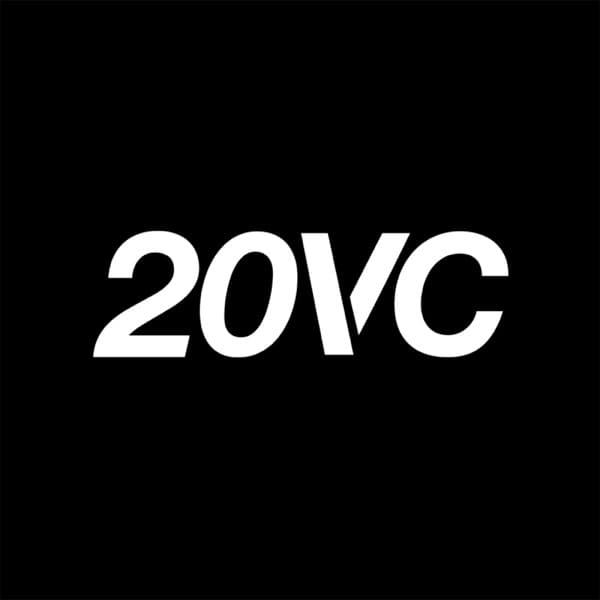
Fabian Pinkers, founder of Odoo, shares insights into building a successful company without traditional management structures. Odoo, a Belgian company, has grown to 5,000 employees and 650 million in ARR by focusing on product quality and customer satisfaction. Pinkers emphasizes the importance of being obsessed with the product and maintaining a long-term vision, avoiding IPOs to keep the company focused on innovation rather than short-term financial goals. Odoo's open-core business model allows for a mix of free and paid features, which has been crucial in scaling the company. Pinkers also highlights the importance of internal promotions and avoiding external hires for leadership roles to maintain company culture. The company prioritizes autonomy and responsibility among employees, with a unique approach to budgeting and management that eschews traditional processes like recurring meetings and strict KPIs. This approach has allowed Odoo to maintain a high growth rate and profitability without external funding since 2014.
Key Points:
- Odoo's growth is driven by a focus on product quality and customer satisfaction, avoiding traditional management structures.
- The company uses an open-core business model, offering a mix of free and paid features, which has been key to scaling.
- Fabian Pinkers emphasizes internal promotions and avoids external hires for leadership roles to maintain company culture.
- Odoo prioritizes autonomy and responsibility among employees, avoiding traditional processes like recurring meetings and strict KPIs.
- The company has maintained profitability and high growth without external funding since 2014.
Details:
1. 🚀 Passion-Driven Success: Odoo's Founding Philosophy
- Success requires an obsession with the mission or goal, emphasizing a passion-driven approach.
- A strategic decision to keep prices low is interconnected with purchasing shares in every transaction, demonstrating a commitment to accessibility and investment.
- Managers actively purchase shares, reinforcing their dedication to the company's success and philosophy, which fosters a strong internal culture.
- The consistent policy of not selling shares indicates a long-term vision and steadfast commitment to the company's foundational principles.
- By avoiding an IPO, Odoo focuses on maintaining control and a unique growth strategy, prioritizing strategic autonomy over short-term financial gains.
2. 📈 Odoo's Growth: From Domain Name to Market Leader
- Odoo has achieved an astonishing 650 million in annual recurring revenue (ARR).
- The company employs over 5,000 people.
- Odoo serves more than 50,000 companies as customers.
- Odoo's strategic focus on modular, customizable ERP solutions has been pivotal in attracting a diverse client base across various industries.
- The company has expanded its global footprint significantly, leveraging partnerships and a strong community of developers.
- Odoo's commitment to continuous improvement and innovation in its software offerings has strengthened its market position.
3. 💼 Innovative Business Models: Open Source to Open Core Transition
- Fabian Pinkers critiques traditional management structures, arguing that titles often lack substance, and common management practices are flawed.
- He suggests reevaluating these management strategies could lead to significant improvements in business operations.
- The discussion provides insights that challenge conventional corporate management paradigms and encourages innovation.
4. 🌐 Overcoming Challenges: Scaling and Global Expansion
- Kajabi's customers have collectively generated over $8 billion in total revenue, demonstrating the platform's capacity to support substantial business growth.
- Kajabi users retain 100% of their earnings, with the average creator earning over $30,000 annually, highlighting the platform's profitability for users.
- For $69 per month, Kajabi offers an all-in-one suite of tools, including websites, email marketing, digital products, payment processing, and analytics, providing comprehensive support for business operations.
- Kajabi supports building private communities, paid newsletters, and course launches without taking a revenue cut from users, emphasizing its user-centric revenue model.
- A featured case study: A creator used Kajabi to launch a new course and saw a 50% increase in revenue within three months, showcasing the platform's effectiveness in driving growth.
5. 🤝 Building a Unique Culture: Leadership, Team Dynamics, and Recruitment
5.1. Partnering with Kajabi and AlphaSense
5.2. Business Insights from Mercury and Odoo
5.3. Odoo's Journey: Challenges and Strategic Decisions
5.4. Product Development and Community Engagement
5.5. Odoo's Competitive Edge and Market Strategy
5.6. Leadership and Team Culture at Odoo
6. 📊 Strategic Financial Decisions: Fundraising and Ownership
- The US company faced growth struggles a decade ago, requiring relocation of key personnel to address issues with consultant overload and project quality.
- A restructuring involved bringing a top consultant from Belgium to the US to manage complex projects, highlighting the importance of strategic talent deployment in overcoming operational challenges.
- Initial resistance to dropping KPIs in favor of project delivery focus reveals the complexity and potential misuse of performance metrics in evaluating talent.
- The recruitment process emphasizes practical assessments over resumes, with on-the-job tasks and IQ tests proving more predictive of performance than traditional interviews.
- The company has streamlined recruitment to a five-day automated process, enhancing speed and efficiency in talent acquisition.
- New hires are often young, with an average age of 26, and are recruited based on their practical skills and cognitive tests rather than work experience or titles.
- Cultural fit and competencies are critical, with a focus on ensuring that recruits are both technically capable and aligned with company values.
- The organization emphasizes purpose and impact as key motivators for the younger workforce, contributing to building a large company with a youthful average age.
- Over 90% of dismissals result from competency issues, underscoring the need for rigorous skill assessments during hiring.
7. 🌍 Navigating Global Markets: Expanding Odoo's International Presence
7.1. Training and Team Structure
7.2. Management Approach
7.3. International Growth Strategy
7.4. Growth Challenges at Different Stages
7.5. Hiring Philosophy
8. 🎯 Visionary Leadership: Sustaining Growth and Industry Disruption
- Flexibility in departments: Ensure departments remain adaptable to meet diverse employee needs and characteristics, fostering a supportive work environment.
- Hiring decisions: Address hiring mistakes promptly by implementing the principle 'when there is a doubt, there is no doubt' to make timely firing decisions, enhancing team efficiency.
- International expansion: Success is driven by selecting the right director rather than focusing solely on geography, emphasizing leadership quality over location.
- Internal promotions: Promote from within to management positions to maintain cultural alignment and enhance employee morale, providing clear career paths.
- Tier two cities: Establish offices in tier two cities to boost employee retention, leveraging less competitive talent markets compared to tier one cities.
- Retention strategies: Focus on retaining experienced employees who are crucial for business efficiency and growth, using targeted retention strategies.
- Competition perception: Concentrate on delivering a comprehensive suite of affordable business applications rather than on directly competing with others.
- Revenue growth: Achieve significant revenue growth, with a 50% annual increase, reaching $550 million this year, driven by strategic pricing and product offerings.
- Pricing strategy: Maintain low prices to commoditize the market and provide accessible technology solutions for all businesses, enhancing market penetration.
- Profitability: Sustain profitability without external funding since 2014, enabling consistent growth and operational independence.
- Valuation focus: Prioritize revenue and transformative impact over valuation, aiming to develop software solutions that change industry standards.
TechCrunch Startup News - Archer Aviation doubles down on defense aircraft with fresh $300M

Archer Aviation, originally focused on air taxi networks, is now prioritizing defense applications for its electric vertical takeoff and landing (eVTOL) vehicles. This strategic pivot is driven by escalating geopolitical tensions and a hawkish defense agenda, prompting startups to explore dual-use strategies. Archer has secured $300 million in equity from institutional investors like BlackRock and Wellington, bringing its total funding to $3.36 billion. This funding will accelerate the development of a hybrid gas and electric-powered VTOL aircraft in partnership with weapons manufacturer Anduril, targeting a program of record from the Department of Defense (DoD) for guaranteed funding. Archer's Midnight aircraft, designed for urban and regional flights, is also suitable for defense due to its low noise profile and discreet operational capabilities. Despite the defense focus, Archer plans to launch its first commercial air taxi network in the UAE by 2025, with expansions planned for other cities by 2026. The company is working towards necessary certifications and aims to produce 650 aircraft annually by 2030, with a current goal of producing 8 to 10 aircraft this year.
Key Points:
- Archer Aviation is focusing on defense applications for its eVTOLs, securing $300 million in funding to develop hybrid aircraft with Anduril.
- The company aims to secure a program of record from the DoD, providing guaranteed funding and a competitive edge.
- Archer's Midnight aircraft is designed for low noise, making it suitable for discreet defense missions.
- Despite the defense pivot, Archer plans to launch commercial air taxi services in the UAE by 2025 and expand globally by 2026.
- Archer is working on certifications and aims to produce 650 aircraft annually by 2030, starting with 8 to 10 this year.
Details:
1. 📱 Samsung Galaxy S25 Ultra: Your AI Companion
- The Samsung Galaxy S25 Ultra automates routine tasks such as finding nearby keto-friendly restaurants and sharing the information with contacts, exemplifying its AI capabilities.
- Users can engage in physical activities like squats while the phone autonomously manages other tasks, showcasing its multitasking potential.
- Marketed as an AI companion, the device significantly reduces the user's workload by handling everyday tasks, allowing users to focus on more important activities.
- The AI features enhance user productivity by streamlining information sharing, task management, and personal assistant services, making the Galaxy S25 Ultra a comprehensive tool for modern users.
2. 🚀 Archer Aviation's Dual-Use Strategy
2.1. Strategic Shift and Financial Backing
2.2. Partnerships and Market Insights
3. 💼 Defense Contracts and Market Expansion
3.1. Military Contracts and Competitive Advantage
3.2. Investment and Strategic Partnerships
3.3. eVTOL Design and Defense Applications
3.4. Commercial Expansion Plans
4. 🔧 eVTOL Innovations and Production Challenges
4.1. 🔗 Partnerships and Strategic Ventures
4.2. 🛡️ Certification Processes and Challenges
4.3. 🏭 Production Goals and Scaling Challenges
5. 📊 Financial Outlook and Strategic Goals
5.1. Financial Outlook
5.2. Strategic Goals
6. 💰 Personal Finance Insights with Andrew G.
- The Personal Finance Podcast, hosted by Andrew G. and Cola, provides practical tips on wealth building and income diversification.
- Andrew G. discusses 'The Six Numbers You Must Know to Build Wealth,' offering simple, actionable steps for financial growth, including understanding your net worth, savings rate, and investment returns.
- Listeners can access the podcast on platforms like Apple Podcasts and Spotify, making it widely available for those seeking financial advice.
TechCrunch Startup News - 3D mood board and marketplace Mattoboard picks up $2M to launch AI visual search

Matoboard, a startup focused on simplifying the creative process for interior designers and architects, has announced a $2 million seed funding round to support its new AI feature, DesignStream. This tool enhances the company's existing platform by allowing designers to efficiently search for products using natural language and visual inputs. The platform, described as a 3D Canva, enables users to mix and match virtual materials, create mood boards, and experiment with design ideas digitally, reducing the need for physical samples and minimizing waste. The design industry, valued at $201.97 billion by 2024, faces challenges with outdated product curation methods, leading to inefficiencies and waste. Matoboard addresses these issues by providing a centralized hub for design experimentation and a more sustainable approach to material sampling. The company plans to expand its material database and partner with global suppliers to bring every material online, further enhancing its platform's capabilities. Matoboard's user-friendly interface makes it accessible to both professionals and beginners, with a free version and a paid pro version available.
Key Points:
- Matoboard's DesignStream uses AI for efficient product search with natural language and visual inputs.
- The platform reduces waste by allowing digital concept presentations before ordering samples.
- Matoboard aims to consolidate design tools into one platform, enhancing efficiency for designers.
- The startup received $2 million in funding to expand its material database and global partnerships.
- Matoboard is accessible to both professionals and beginners, with free and paid versions available.
Details:
1. 📱 Samsung Galaxy S25 Ultra: Your AI Companion
- The Samsung Galaxy S25 Ultra provides an AI-driven feature to automatically find and communicate nearby restaurant details, enhancing user experience by reducing manual input.
- It supports voice-activated commands for multitasking, such as allowing users to continue exercising while engaging with the phone.
- Marketed as an 'AI companion', the phone aims to simplify tasks and improve efficiency, enabling users to focus more on personal activities.
2. 🛠️ Matoboard: Revolutionizing Interior Design with AI
2.1. Introduction to Matoboard
2.2. Funding and New AI Feature
2.3. Platform Capabilities and Industry Challenges
2.4. DesignStream and AI Integration
2.5. Leadership and Experience
2.6. Innovative Features
2.7. Platform Comparison and Usability
2.8. Future Plans and Expansion
3. 💰 The Personal Finance Podcast: Financial Empowerment Tips
- The Personal Finance Podcast, hosted by Andrew Gene Cola, is dedicated to helping listeners build wealth, create multiple income streams, and optimize their financial management strategies.
- A key episode, 'The Six Numbers You Must Know to Build Wealth,' outlines six critical financial metrics that listeners should monitor to effectively build and manage their wealth. These metrics are designed to empower listeners with actionable insights to improve their financial health.
- The podcast simplifies complex financial concepts, aiming to make them accessible and less overwhelming for a broad audience. By dissecting these concepts into manageable parts, listeners can better understand and implement the strategies discussed.
- The emphasis is on practical advice that listeners can immediately apply, ensuring each episode delivers tangible value and strategic understanding.
Y Combinator Startup Podcast - The Right (And Wrong) Way To Spend Money At Your Startup

The discussion emphasizes that early-stage startups should prioritize finding product-market fit over spending money on growth. Money at this stage should primarily be used to buy time, not to scale prematurely. Founders are advised to be frugal, spending only on essentials like a laptop and living expenses. Hiring should be minimal, focusing on a few engineers rather than sales or marketing roles until product-market fit is achieved. The conversation also highlights the importance of transparency with investors and maintaining accountability through regular updates. As startups progress to Series A and beyond, spending can shift towards building a sales team and scaling, but only if product-market fit is confirmed. Founders are cautioned against overhiring and unnecessary spending, which can reduce runway and hinder the path to product-market fit.
Key Points:
- Focus on finding product-market fit before spending on growth.
- Use money to buy time, not to scale prematurely.
- Be frugal in early stages; spend only on essentials.
- Hire minimally; avoid sales/marketing hires until product-market fit.
- Maintain transparency with investors through regular updates.
Details:
1. 💡 The Quest for Product-Market Fit
- Founders often overspend due to not identifying strong demand; lacking a clear 'light bulb moment' with customers highlights this issue.
- Chasing product-market fit through forced growth can lead to resource misallocation; founders should consider adapting their approach instead.
- A common misconception among early-stage founders is equating product-market fit with growth needs; financial investment can drive growth but does not guarantee product-market fit.
- Before achieving product-market fit, the primary focus should be on identifying it, as financial resources mainly extend the time available to reach this goal.
- Successful examples include Dropbox, which iterated its product based on user feedback to achieve a strong market fit.
- Strategies for identifying product-market fit include conducting thorough market research, engaging in customer interviews, and iterating on feedback to refine the product offering.
2. 💵 Frugality in Early Stages
- Startups should adopt a frugal approach, minimizing expenses to essentials like a laptop and basic living arrangements.
- Avoid unnecessary spending by focusing on critical needs, preserving capital for strategic investments.
- Implement strict budgeting and financial planning to ensure money is spent sparingly and effectively.
- Explore cost-saving measures such as sharing resources with other startups or utilizing free software tools.
- Regularly review and adjust financial strategies to align with changing needs and opportunities.
3. 👥 Strategic Early Hiring
3.1. Initial Funding and Hiring Strategy
3.2. Role of Founders and Contractors
4. ⏳ Managing Time and Resources Wisely
- The amount of money in the bank is directly correlated to the time available to achieve product-market fit.
- Larger teams can slow down the process of reaching product-market fit due to increased inertia and challenges with pivoting.
- A longer runway allows for multiple pivots and fundraising attempts, increasing the chances of finding a successful strategy.
- Founders often overspend due to not having a clear indication of product demand from customers, leading to misguided efforts.
- First-time founders may mistakenly believe that pushing harder will lead to success, rather than adapting based on customer insights.
- Maintaining frugality and discipline with financial resources can be aided by regular investor updates to ensure accountability.
5. 🚀 Effective Scaling Post-Fit
- Post-product market fit and securing $8-$10 million in Series A funding, prioritize hiring a sales team to leverage market demand effectively.
- Reaching $1 million ARR with clear market demand and being the sole salesperson highlights the urgency to expand the sales team to drive growth.
- Ensure hires are accretive by generating more revenue than their cost, which is crucial for effective capital utilization.
- Break down the hiring process into strategic steps: identify key sales roles, define success metrics, and implement a structured onboarding process.
- Consider using examples or case studies to illustrate successful scaling strategies, such as companies that effectively utilized their Series A funding for growth.
6. 📈 Ensuring Quality Revenue
6.1. Understanding Revenue Quality
6.2. Net Dollar Retention and Customer Retention
6.3. Strategies for High Net Revenue Retention
7. 🔍 Financial Discipline and Investor Relations
7.1. Financial Discipline in Startups
7.2. Investor Relations
Included Channels
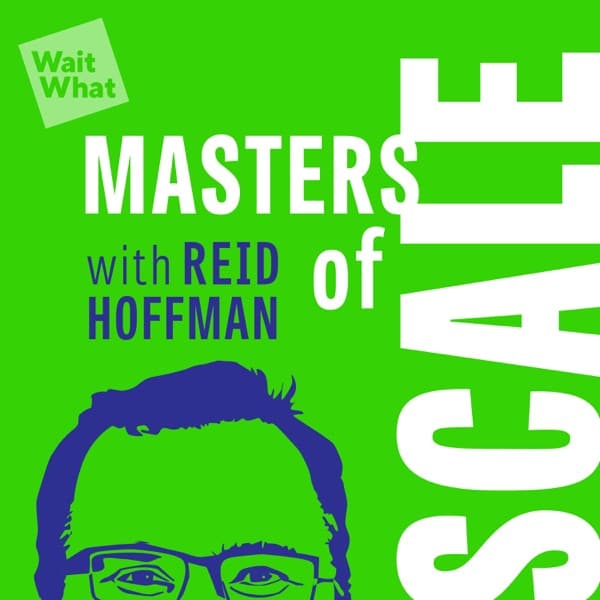 Masters of Scale
Masters of Scale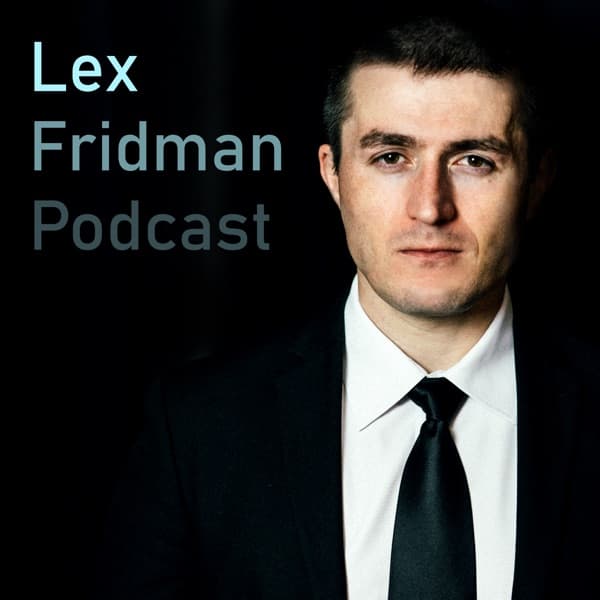 Lex Fridman Podcast
Lex Fridman Podcast All-In with Chamath, Jason, Sacks & Friedberg
All-In with Chamath, Jason, Sacks & Friedberg Modern Wisdom
Modern Wisdom a16z Podcast
a16z Podcast Lenny's Podcast: Product | Growth | Career
Lenny's Podcast: Product | Growth | Career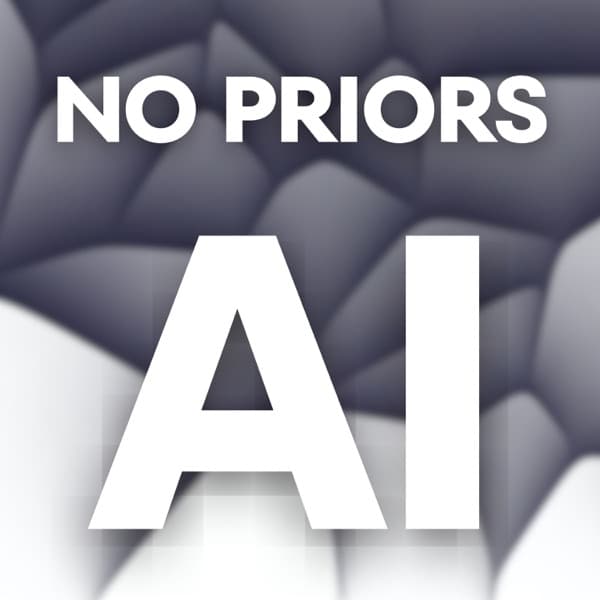 No Priors AI
No Priors AI The Twenty Minute VC (20VC): Venture Capital | Startup Funding | The Pitch
The Twenty Minute VC (20VC): Venture Capital | Startup Funding | The Pitch How I Built This with Guy Raz
How I Built This with Guy Raz BG2Pod with Brad Gerstner and Bill Gurley
BG2Pod with Brad Gerstner and Bill Gurley TechCrunch Startup News
TechCrunch Startup News Y Combinator Startup Podcast
Y Combinator Startup Podcast